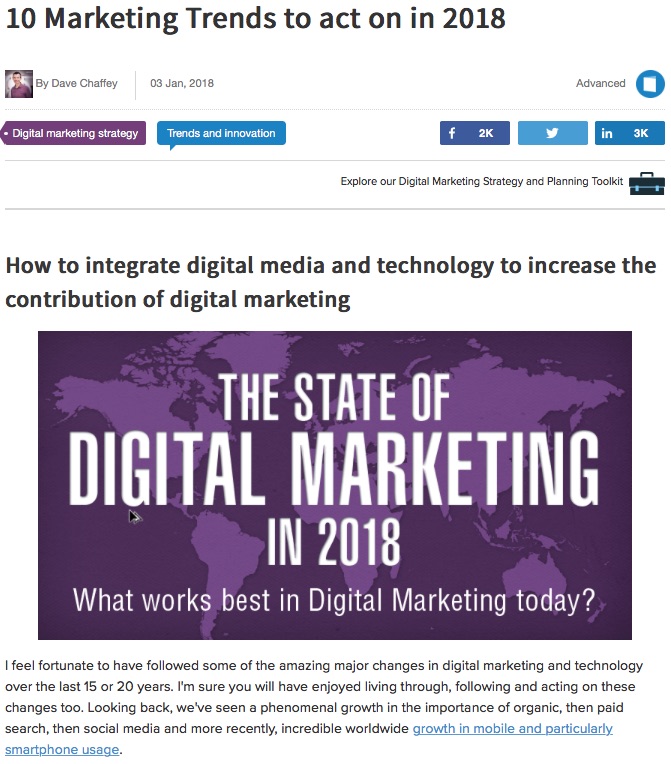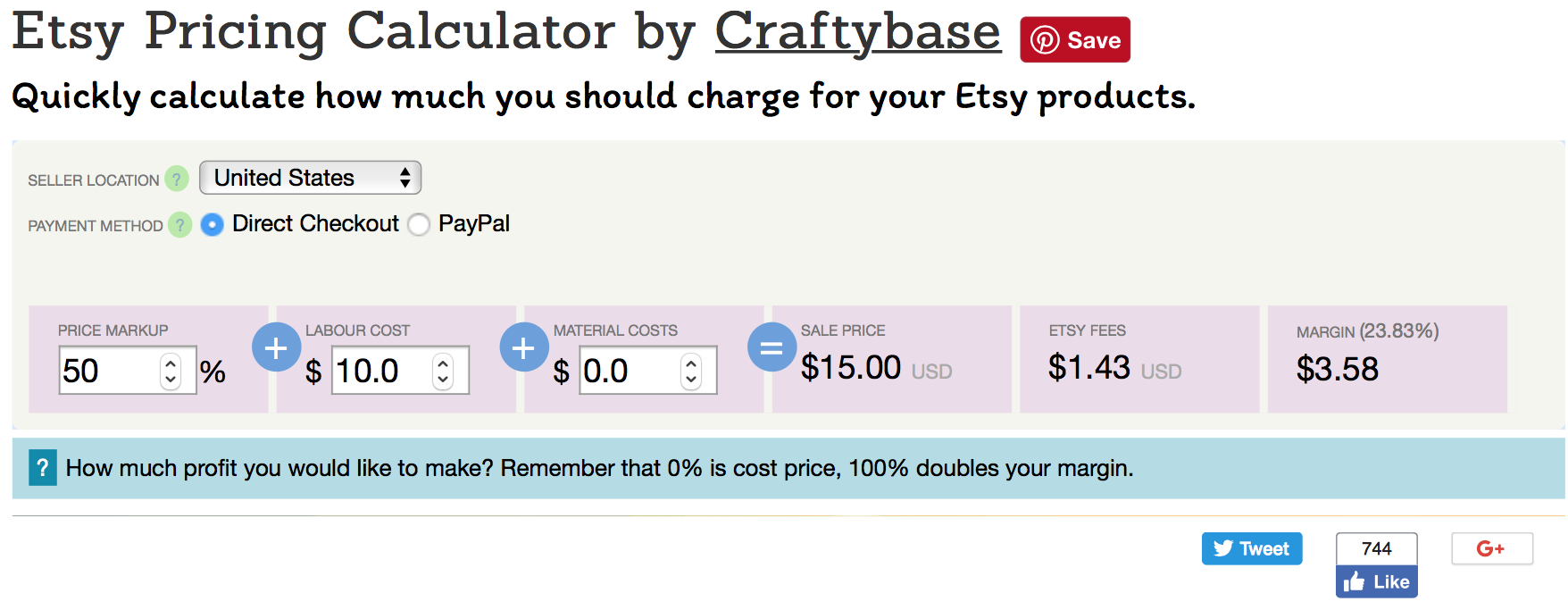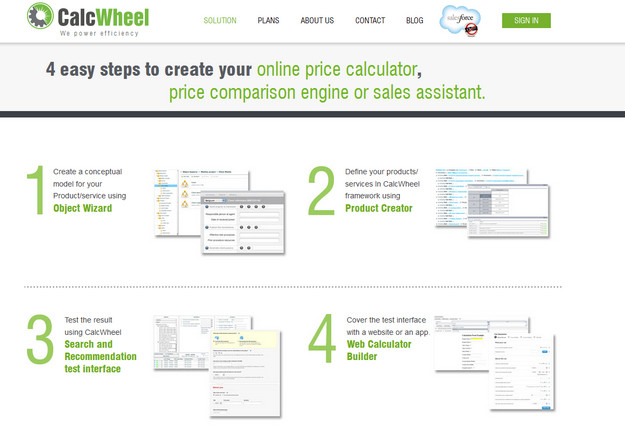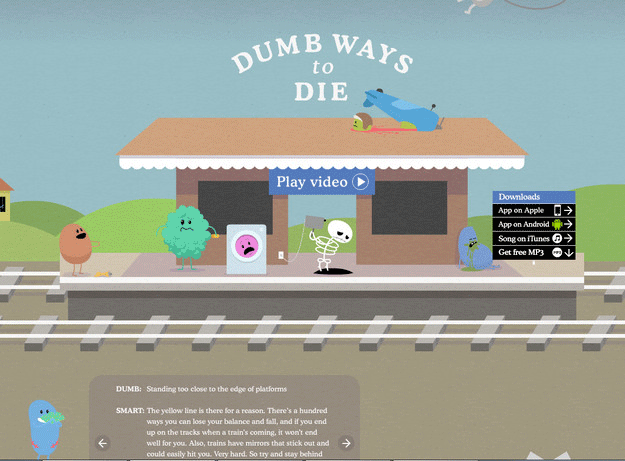Content marketing has been leaving its mark on the web – and is showing no signs of slowing down. These days, companies from Fortune 500 corporations to small mom-and-pop shops are launching creative, fun and engaging pieces designed to get people clicking … and talking.
Unfortunately, most content marketing puts its emphasis on the content, rather than the marketing. Few sites dare to venture beyond the safe and comfortable walls of their blog. In this series, we’ll look at using entertainment, community, education, and practicality to do just that.
The truth is, if you can make the customer laugh, you can make them buy. Laughter naturally reduces our “no selling” guard and makes us more open and responsive to what’s being said. Great marketers know that injecting a little humor is the secret sauce of sales, and content marketing with a focus on entertainment takes that to a whole new level.
Make the boring interesting with viral videos
Public transportation is, at its best, pretty mundane. It’s one of those things we think we just have to deal with. So when Metro Trains in Melbourne, Australia created Dumb Ways to Die, it caught on and not only got its message across but made people smile along the way.
Metro Trains in Australia got its point across with cute, terrifying animations.
A few of the dumb ways to die – beyond walking out in front of a train or falling from the platform?
- Hiding in a dryer
- Eating 2-week old unrefrigerated food
- Sticking a fork in a toaster
Between its dark humor, there’s an underlying message that “hey, jumping out into an oncoming train is dumb. Right up there with selling your kidneys on the internet.”
If you are in a “boring” industry, Neil Patel has more tips for you on how to make your content marketing stand out.
How to do it
You can’t exactly set out to “create a viral video”, as plenty of attempts have ended up backfiring and making the company look clueless. But you can create a fun, interactive cartoon that shares its message in a way that gets noticed, and gets a few laughs. Tools like MotionArtist, Vyond and PowToon let you create a variety of animated graphics without any technical know-how, so even if you can’t draw, you can still get creative.
A little friendly competition
A competition between fans is a great way to encourage interaction and get people talking about and sharing your brand. Back during the Winter Olympics, Coca-Cola decided to create its own variation, called Coke Games.
It encouraged customers to film and upload videos of themselves participating in the games, which included events like Speed Sipping, Coke Curling and Bottle Cap Hockey. Participants would share their videos on Coke’s Facebook wall, and be entered to win one of several prizes.

How to do it
While you may not have a brand reach as big as Coca-Cola, you can still leverage events big and small to promote yourself. Is there a local event or festival you could sponsor while getting your name out to your customers in a way that encourages them to have fun and be creative? If you’re in the U.S., Fairs and Festivals has a state-by-state listing of local celebrations. Get out your notebook and start brainstorming ideas. You never know what you might come up with!
Hitting the sweet spot with gamification
Gamification involves bringing typical game development solutions to marketing challenges. Things like “Level badges” and rewards are one example of gamification, but those are only scratching the surface.
One example of this is The GE Show, a combination How-It’s-Made/Game that incorporates fun and learning in a way that gets people talking. The interactive games teach you about the technology behind them, and everything that’s involved in making daily life and commerce happen:

There are all kinds of gamification sub-niches, including education, commerce, social good, and much more. By including an element of play within a story, these types of games get us interacting and bring out the inner child that was once fascinated by trains and other systems.
How to do it
Although there’s no easy, inexpensive way to add an element of gamification to your own business strategy, this guide from Quick Sprout has everything you need to know, including ideas, tools, and resources on how to get it done.
Now let’s take a look at the more serious aspects of content marketing beyond the blog, including inspiration, practicality, and education. Although it’s not as fun on the surface as games or funny viral videos, you can only market yourself so much by making people laugh. Some people need more meaty, real-life information in order to make an informed decision, and the next article will show you how you can use a variety of content marketing systems to make that happen. Fun and games are one thing – but at some point, someone’s going to need to show their manager or boss some concrete details that demonstrate the real value of your offer. Here’s how to give it to them.
Tried and True: Content Marketing 1.0
Although certain types of content still stand the test of time, including pricing sheets, white papers, and feature lists, these are quickly being replaced by newer, more engaging versions. Why download a pricing sheet when you could get a customized quote? Why let a white paper gather digital dust somewhere in the catacombs of your hard drive when you could actually try before you buy with an online demo?
But before you ditch your PDF report in favor of an interactive checklist – keep in mind that many of your prospects are still going to actively request these types of things, simply because they want something they can print out and compare. Despite rallying cries to the contrary – paper isn’t going anywhere, anytime soon. With that being said though, let’s take a look at how to take your content marketing efforts one step further.
Create a comprehensive resource center
There’s one thing to be said about resource centers – they get backlinks by the truckload. Let’s face it, bloggers, marketers, and journalists need research – and they need it yesterday. So rather than trying to create it from scratch, they’ll eagerly link to a source that has taken the time to not just gather all the information but put it into an easily readable, easily linkable format.
HubSpot is one well-known example of this practice, as is SmartInsights. Each one focuses on a core area of expertise, along with all the sub-niches within it. Beyond that, however, they make every offer available to visitors in a downloadable guide, checklist, webinar or interactive tool. Because only a basic version is available to visitors, there’s an incentive to subscribe and get the whole enchilada, instead of “leftovers.”

How to do it
Building a link-worthy content resource center takes time, but the sooner you start, the sooner you’ll see results. It’s not just about creating blog posts, however. You’ll essentially be curating the “best of the best” when it comes to content in your area of focus. Subscribe to industry-leading blogs in your niche. Scout for trends from top research organizations like Comscore and Pew Research Center. You’ll need to scrutinize and tie together things like charts, infographics, survey findings, and statistics – all in one place.
That being said, not many people are up to the challenge, because it looks an awful lot like work. But if you want to truly excel at content marketing, you have to create extraordinary content.
Provide a custom quote with a pricing calculator
As more and more competitors try to jockey for first place in the search engines, websites are becoming increasingly more interactive. It’s no longer just enough to compete on price or even customer service. You’ve got to offer something customizable – and pricing calculators are a great way to do it.
Take Etsy for example, the Amazon of the handcrafted world. Many people would love to create and sell their crafts online, and Etsy makes it point and click simple for them to do so. However, these are crafters, not businesspeople – so how do they know what to charge?
Enter the Etsy Pricing Calculator.

Made by a company which specializes in finance tools, inventory tracking and spending for handcrafting artisans, the Etsy calculator is a free tool that illustrates what someone should charge for their crafts based on time, materials and other factors. The calculator also doubles as a nice incentive to get crafters to take the next step in managing their inventory, calculating expenses, and turning their hobby into a lucrative home business.
How to do it
If your product or service doesn’t have a lot of variables that make calculations more complex, you can have a simple quote pricing calculator/estimator made with a little web programming through sites like Upwork.
If, however, you need something that takes more complex variables and branches into account, you may want to look into an advanced solution like ConvertCalculator – which lets you build an online pricing calculator through their online service.

Get people clicking with an interactive demo
Depending on what you sell, having an interactive demo can instantly pre-qualify your customers for you, by letting them test drive your program, product or service before they buy. No sales. No pressure. They’ll either see that it’s exactly what they’ve been looking for – or it isn’t.
There are hundreds of foreign language learning products out there, but one of the most well-known is Rosetta Stone. One of the reasons it stands out is its free interactive demo, which lets you choose from dozens of languages while getting a basic primer in the language of your choice. Although you can’t speak back during the demo as you can with the actual software, the demo does walk you through what using the actual program is like.

By the end, you’ll have learned a few words of the target language, and come away with a better understanding of the basics – which is exactly what you need to take the next step in language learning.
How to do it
There are several software tools available to help you create interactive demos and simulations, including Demo Builder, MadCap Mimic and ActivePresenter. Each one differs in terms of features and pricing, but it’s a good idea to try a free, lite or trial version of each to see which one will meet your specific needs.
All of the programs will allow you to record the screen, along with including specific effects, highlights, zooms or call-outs, to create a sort of interactive video demonstration. They all also have a rudimentary editing suite and specialized effects to help with user comprehension and feedback.
Now it’s your turn
What are your favorite content marketing tools? Share them with us below in the comments!
About the Author: Sherice Jacob helps website owners increase conversion rates through user-friendly design, compelling copywriting and smart analytics. Learn more at iElectrify.com and get your free conversion checklist and web copy tune-up.

Comments (19)